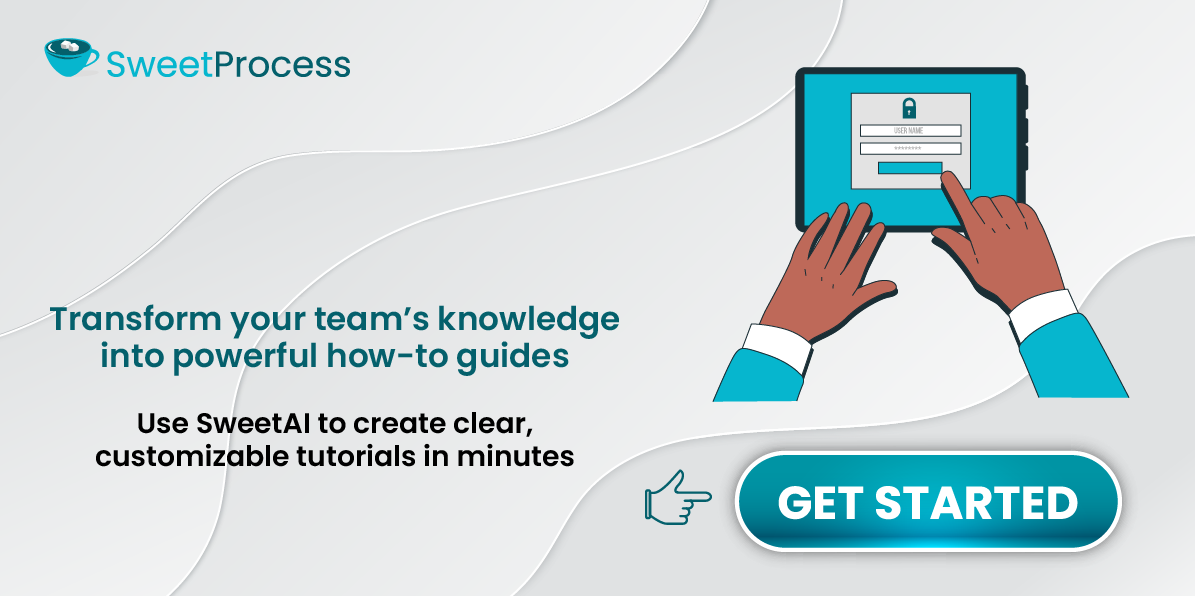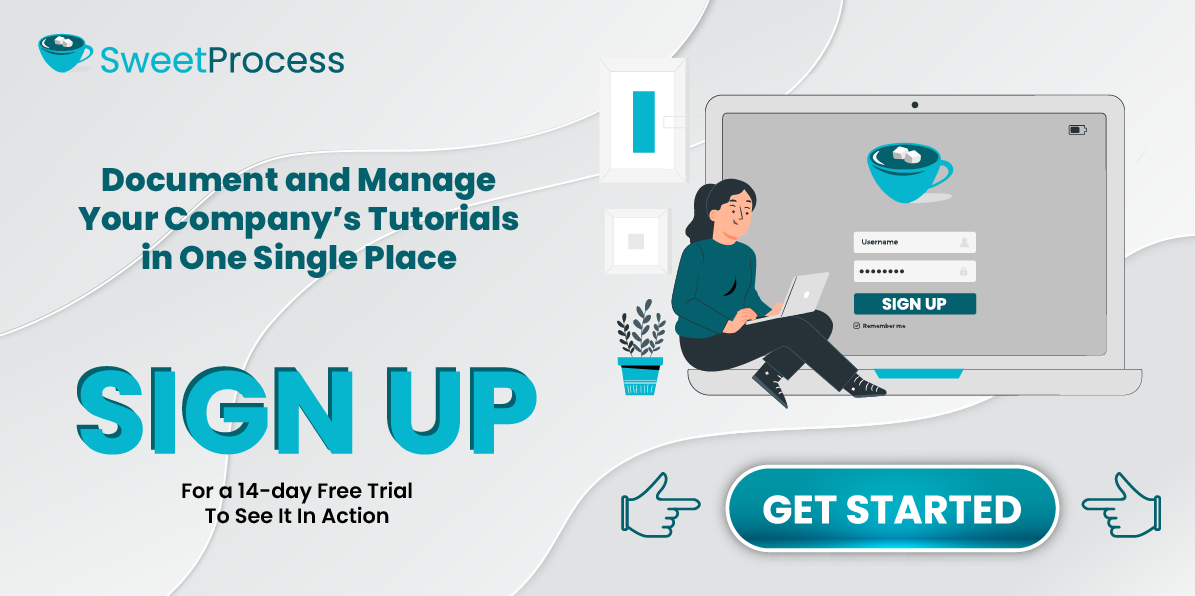Last Updated on August 22, 2025 by Owen McGab Enaohwo
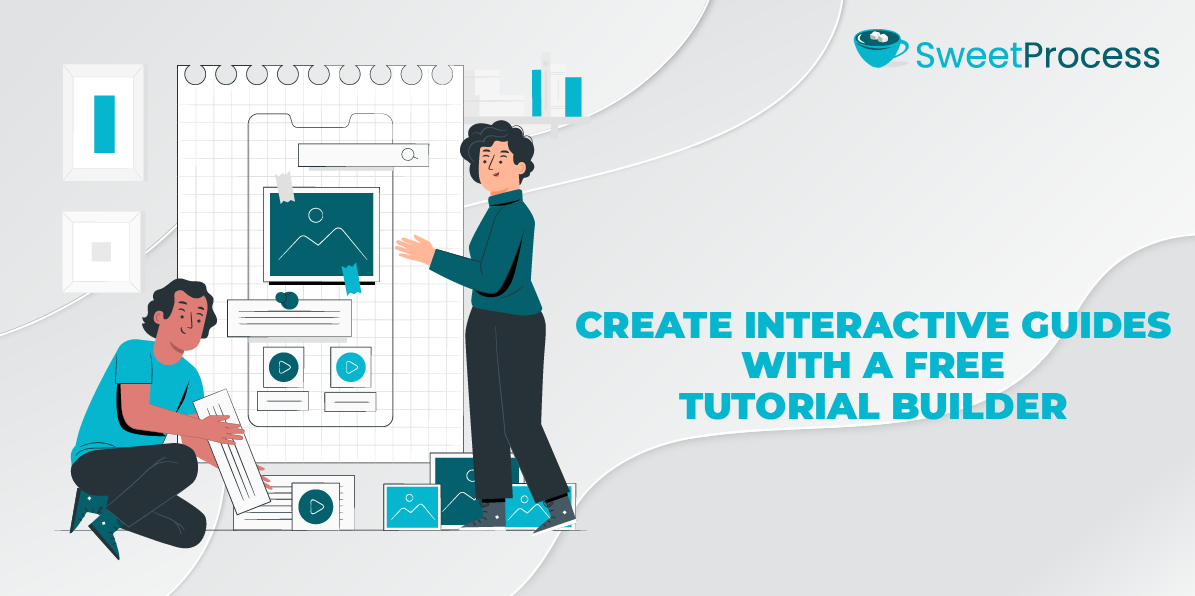
What happens when a key employee leaves and takes all their process knowledge with them? Or when a new hire joins and gets thrown into the deep end with a Google Doc filled with process notes?
Sooner or later, your new hire will be stuck, and you’ll find yourself answering the same how-to questions instead of focusing on core work.
When your business lacks a structured way to share knowledge, critical processes and procedures are often siloed with a few team members, making you vulnerable when someone resigns, relocates, or simply forgets their responsibilities. This is why it’s critical to invest in interactive tutorial builders that capture and manage your company processes. With the right tool, you can onboard new employees and eliminate knowledge silos.
In this article, we’ll explore the importance of using a tutorial builder to document your company processes and procedures, and most importantly, how to create one.
Table of Contents
Why You Need a Tutorial Builder
Getting Started With the SweetProcess Tutorial Builder: Create How-To Guides in Minutes
Why Choose SweetProcess as Your Tutorial Creation Tool
How CFO Services Group Uses SweetProcess To Document and Manage Its Tutorials
Why You Need a Tutorial Builder
Your organization needs a tutorial builder that makes it easy to create step-by-step instructions for training purposes. Let’s take a closer look at how this tutorial builder will benefit you and your team.
Enhanced Time Efficiency

Time is a precious resource in any business. Without clear documentation, your team will spend hours searching for vital information. According to statistics, 47% of employees find their employer’s digital documentation system hard to navigate. This inefficiency eventually adds up, resulting in a significant amount of lost time, which is a major productivity killer.
However, with a tutorial builder, you can eliminate this issue by providing step-by-step visual instructions that your team can access anytime. For instance, instead of explaining how to upload a report or process a client request repeatedly, you can share a dynamic tutorial once for reference. This way, you have fewer interruptions and mistakes, and everyone is onboarding faster.
Jacob Bank, the founder and CEO of Relay.app, shared his experience building an AI agent that automates the creation of tutorial videos, significantly reducing the time required to create content. Thanks to Artificial Intelligence, he streamlined the process from scripting to video production, demonstrating the potential for increased efficiency in documentation tasks.
Reinforce Consistency and Standardization
Imagine your five employees performing the same task in five different ways. Sounds like a recipe for chaos, right? Lack of process standardization increases the chances of quality control issues, customer complaints, and compliance risks.
A tutorial builder comes in handy by ensuring that every employee follows the same steps, in the same order. For instance, if a customer support team is responding to refund requests, they can use the organization’s documented interactive guide. Each representative handles issues with the same tone, documentation, and approval process, as outlined in the brand guide.
Improved Efficiency and Productivity

One of the best ways to keep your team productive and efficient is by clearly documenting the processes. This approach ensures that they get more done in less time. They don’t have to pause their work to confirm every step or troubleshoot avoidable mistakes since they have intuitive guides that walk them through tasks from start to finish. With an AI-powered how-to guide generator, creating these guides becomes faster, more consistent, and easier to maintain.
Let’s say your sales team is learning a new CRM software. Rather than scheduling hours of live training, a tutorial builder lets you create interactive walk-throughs of how to add leads, manage pipelines, and generate reports. Your team will learn much faster, which frees your managers to focus on high-impact work.
Improve Continuous Improvement and Training Materials Automation

Your business is always evolving, and so should your documentation. For years, most businesses used static documents for training; however, the work environment has shifted toward digital processes. In this case, a tutorial builder makes it easy to digitize your training materials. You can use a guide creation software to create and revise your resources as often as possible.
Updating content in real time ensures that your documentation is aligned with the latest tools and policies. For instance, if your digital marketing is regularly testing new email platforms or analytics tools, instead of creating new training from scratch each time, they can duplicate an existing tutorial and add the updated steps. This approach supports a culture of continuous improvement.
Increase Productivity and Close the Knowledge Gap
For your company to be more productive, you need to develop a system of knowledge continuity. When your experienced employees take a vacation or leave, the team should continue operating without any hiccups. A tutorial builder preserves this institutional knowledge and makes it accessible to all employees.
You can use this tutorial software to write a knowledge base article covering key company information. This way, if you hire a new developer, they can refer to these tutorials created by the senior developers to settle into their role much faster.
Sarah Brenner, the director of quality assurance at Belvidere Community Unit School District 100, implemented such a tool to make information easily accessible to stakeholders, including parents and guardians. The district needed a system that could train staff efficiently and ensure consistency in operations.
She says, “There’s a knowledge base function within the platform and that’s a great way that all of our stakeholders—whether it be parents, staff, and especially some of our clerical staff who work a lot with our procedures—can access the information that they need.”
With the right tool, the organizations increased productivity by reducing the time spent searching for information. In addition, they bridged knowledge gaps among staff members, leading to a more cohesive and effective team.
Getting Started With the SweetProcess Tutorial Builder: Create How-To Guides in Minutes
Creating step-by-step tutorials doesn’t have to be a time-consuming task. With SweetProcess, you can document even the most complex procedures in just a few minutes, even if you don’t have any technical expertise. SweetProcess’s AI-powered assistant, SweetAI, simplifies every step of the process, whether you’re building internal training materials, standard operating procedures (SOPs), or how-to guides.
In this section, we’ll walk you through how to create, edit, and customize your tutorials using the SweetProcess tutorial builder. Each step will help you turn your company’s knowledge into easy-to-follow, interactive documentation that keeps everyone aligned and productive.
Step 1: Generate the Tutorial With SweetAI

With SweetProcess, you don’t have to generate your tutorial from scratch. Thanks to SweetAI, you can describe the procedure you want to document, and this feature will automatically generate a structured how-to guide for you.
Here’s how:
- Open your SweetProcess account.
- Switch to the “Procedures” tab and select “Create Procedure.”

- Add a procedure title.
- Click “Write with SweetAI” to generate the tutorial.

- SweetAI provides this draft within seconds. To edit and refine the tutorial, tap the pencil icon.

This feature is perfect for founders, managers, or team leaders who want to save time while still producing high-quality training content.
Learn more about how to write a procedure on SweetProcess!
Step 2: Review and Edit Your Tutorial Guides
Once SweetAI has created your draft, you can refine it to align with your brand’s tone, style, and internal workflows.
You can update step-by-step instructions and add or remove steps as needed. Follow these steps:
- Scroll down on your procedure to view the “Steps List.”
- Add a prompt on the SweetAI text box to either update or delete steps.
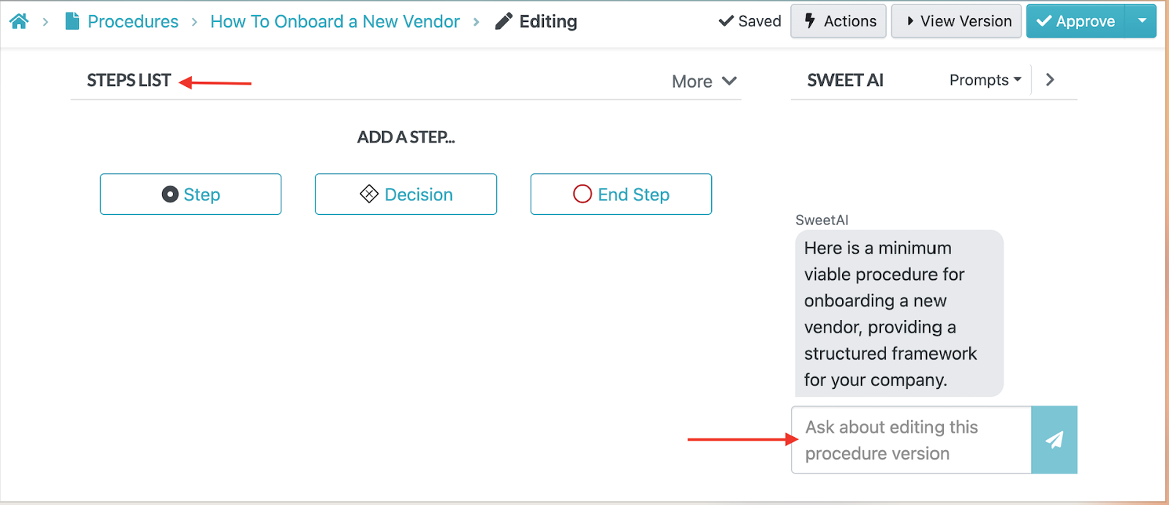
- The steps will be generated based on your instructions.

- Additionally, you can edit every step with SweetAI.
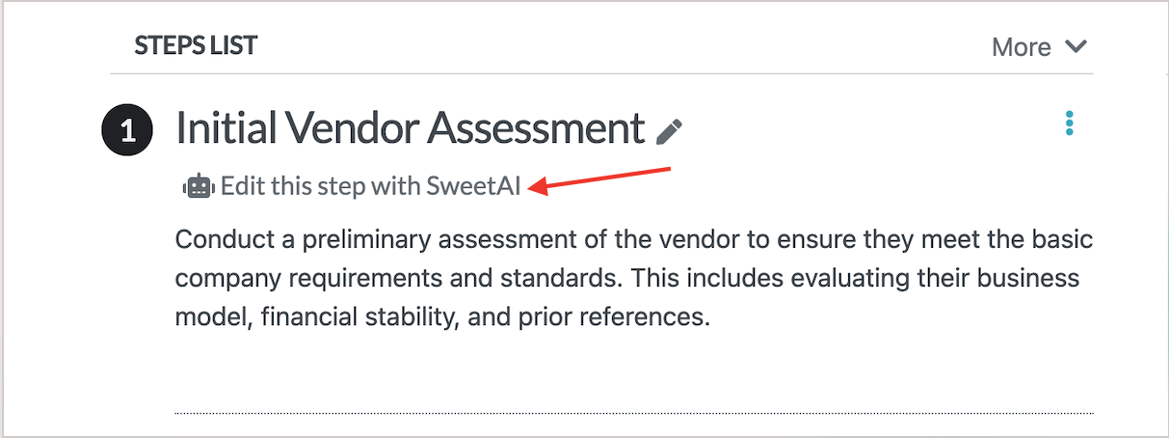
- Once you’ve made all the changes, apply them.

You can also use this feature to add comprehensive procedure descriptions, embed media such as images or video content, and include contextual information to make each step easier to follow. This flexibility makes your tutorial easy to understand and implement.

Step 3: Customize Your Tutorial

SweetProcess has customization features to make your tutorial more dynamic. For instance, you can move steps around, reorder them for clarity, or group them into sections.
If the procedure requires choices, you can convert steps into decision points with branching paths. You can also convert steps into endings if they’re the final step in a particular process path. These options make your tutorial feel intuitive and tailored to real-world scenarios.
- Scroll down to the steps list and click on the three dots on the right.
- Select the action you want to take.
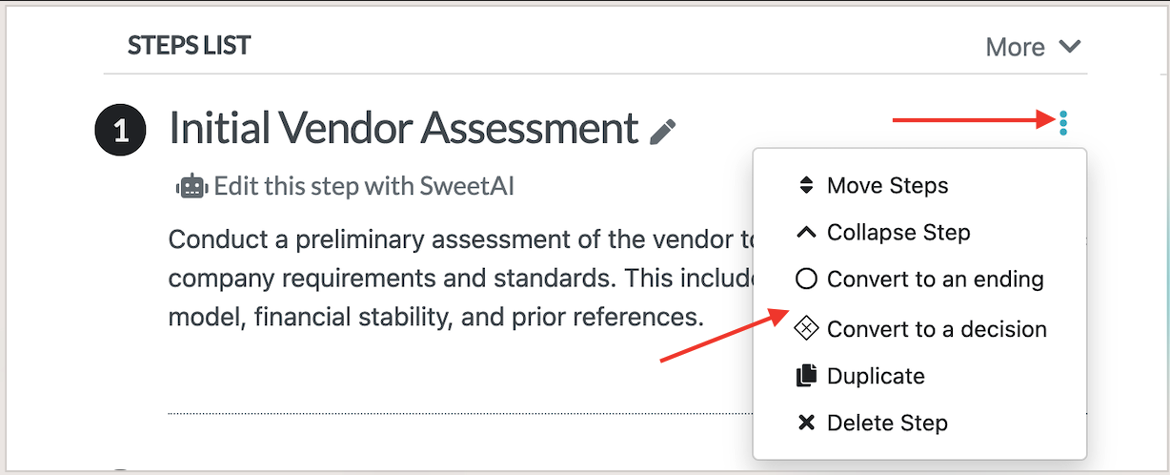
Step 4: Approve and Share Tutorial Guides With Your Team Members
Once your tutorial is complete, you can submit it for approval if your workflow includes reviewers or instantly share it with team members.
SweetProcess lets you assign these tutorials to individuals or entire departments, ensuring the right people get the right documentation at the right time. To access these features:
- Click on the “Approve” button in the top right corner.
- Choose whether the tutorial needs to be approved or approve it.

Additionally, every tutorial is stored in one central location; therefore, it’s easily accessible whenever someone needs it.
Why Choose SweetProcess as Your Tutorial Creation Tool
Your business needs a tutorial builder that seamlessly boosts real-time collaboration, customization, and knowledge management. SweetProcess offers a set of features that make it the ideal platform for creating clear and actionable tutorials.
If you are looking for a go-to tool, here’s why you should select SweetProcess:
Collaborate Seamlessly With Team Members
Creating tutorials shouldn’t be a solo project. You need to collaborate with your team members so that everyone is on the same page. The advantage of using SweetProcess to create these tutorials is that it allows team members to suggest edits, leave comments, and work together to build the best possible procedure.
This collaborative workflow ensures that tutorials are accurate, up-to-date, and reflective of how things are actually done in the organization.
For example, the HR and IT departments can work together to create an onboarding tutorial for new software developers. Instead of working in silos, both teams can edit and comment on the same document, streamlining the process and eliminating miscommunication.
Follow these steps:
- Log in to your account and click “Tasks.”
- Select “Assign Tasks.”

- Select the employees you want to collaborate with.

- To track progress, open the “All Tasks” tab.

Assign Tasks to Employees
You can also assign particular tasks to employees directly within a tutorial or procedure, making it easy to delegate responsibility and track completion. This feature ensures that tutorials are executed.
For instance, after a training session, you could assign a task, such as the “New Employee Setup” tutorial, to the IT department to ensure that all accounts and devices are prepared before the new hire reports on their first day. Here’s how
- Open the specific procedure.
- Click on the three dots.

- Tap “Assign as Task.”

- Choose the specific employee or department.
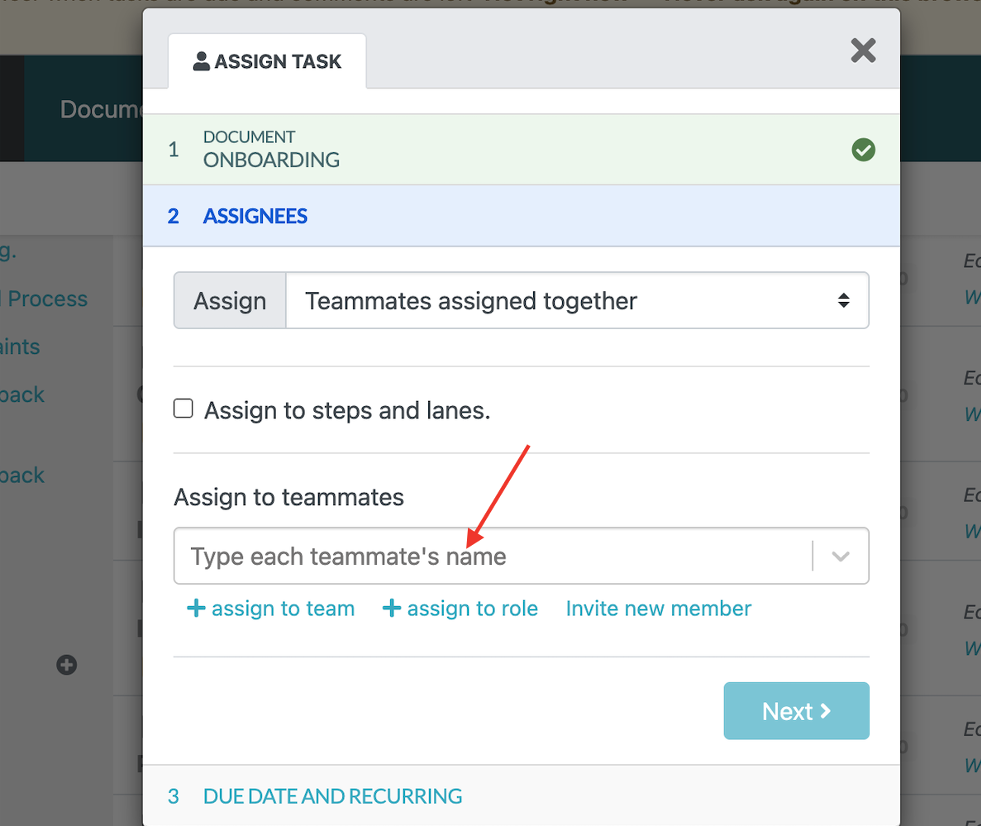
- You can also set due dates for easier tracking.
Format Tutorials for Easy Reading
Clear formatting makes it easier to understand and follow your tutorial. With SweetProcess, you can format the text, adjust text color, use paragraph styling for better structure, and highlight important instructions.
- As you edit the procedure, click on the three dots to change text color and paragraph styling.

- Choose the preferred formatting option.

Add and Edit Multimedia
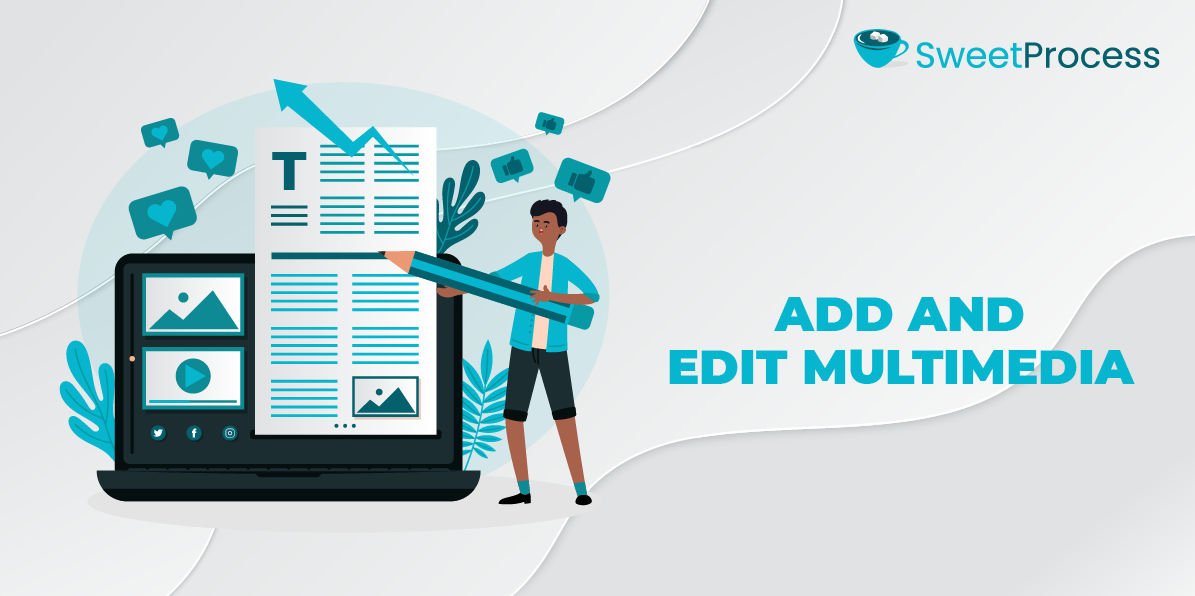
Some employees will understand your tutorials much better if they have multimedia elements, such as video clips, images, and tables. SweetProcess makes it easy to add these visuals, which come in handy when explaining complex tasks or providing additional context.
For instance, a step explaining how to set up a new software tool can include a short video tutorial and a screenshot walkthrough, making it much easier for a beginner to replicate the process correctly the first time.
Use the icons above the text box to add these elements.

Link to Other Procedures, Processes, and Policies
Most company documentation is interlinked. Therefore, as you create tutorials, you can connect them to related procedures, processes, and company policies so that your employees have access to a comprehensive knowledge hub. This way, employees can easily switch between guides.
To link your company policy to an existing procedure, follow these steps:
- Open the “More” tab to view the policies.
- Scroll to the specific policy and tap the “Related Procedures” icon on the sidebar.

Alternatively, you can also link to related processes from the same sidebar.

How CFO Services Group Uses SweetProcess To Document and Manage Its Tutorials
CFO Services Group, a management accounting firm, encountered significant challenges as the company expanded. Initially, all the processes were documented in Microsoft Word, but this approach proved ineffective in enhancing team performance. The president and CEO, Manny Cosme, discovered SweetProcess while searching for an efficient system.
By implementing SweetProcess, the company successfully transitioned from scattered documentation to a centralized, accessible knowledge base. He says, “It’s so much easier. We can actually train a new employee within two weeks now, from the time that they start day one. It’s just them shadowing and looking at what we’re doing, and then week two is them doing it on their own using SweetProcess as a guide. By the end of week two, everyone has been trained.”
This shift has come with multiple benefits, such as:
- Reduced reliance on tribal knowledge: Key processes were no longer stored in employees’ heads but documented in a centralized system.
- Faster and more consistent onboarding: New hires could get up to speed quickly using structured tutorials.
- Improved team accountability: Employees could refer to the same documented processes, reducing misunderstandings and repeated questions.
As demonstrated by CFO Services Group, SweetProcess provides a well-rounded solution for organizations looking to streamline their operations and improve employee performance. Once you sign up for an account, you can leverage the AI-powered tutorial builder to create detailed guides quickly.
Additionally, the centralized knowledge base will help you maintain all procedures, processes, and policies in one accessible location.


